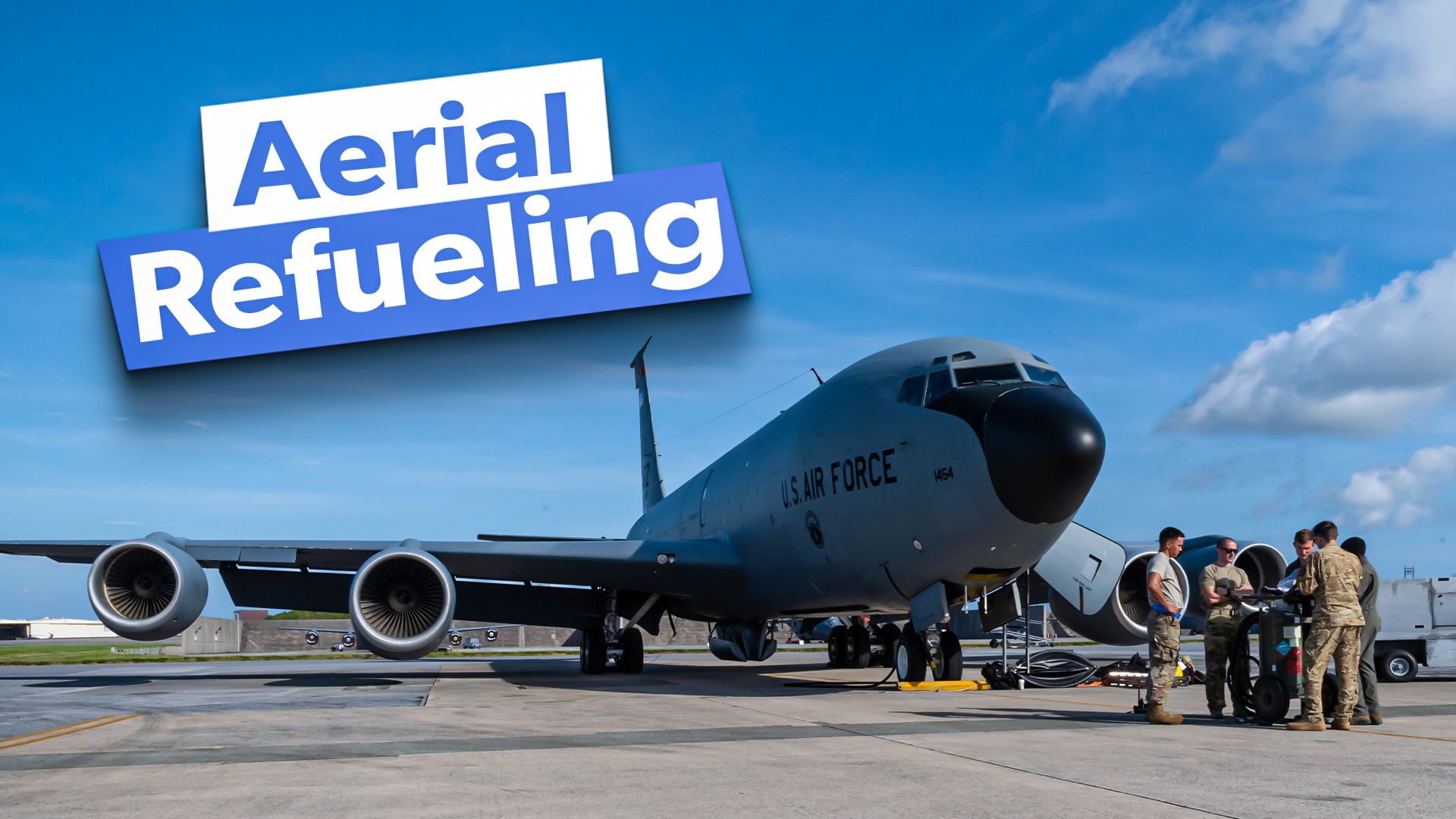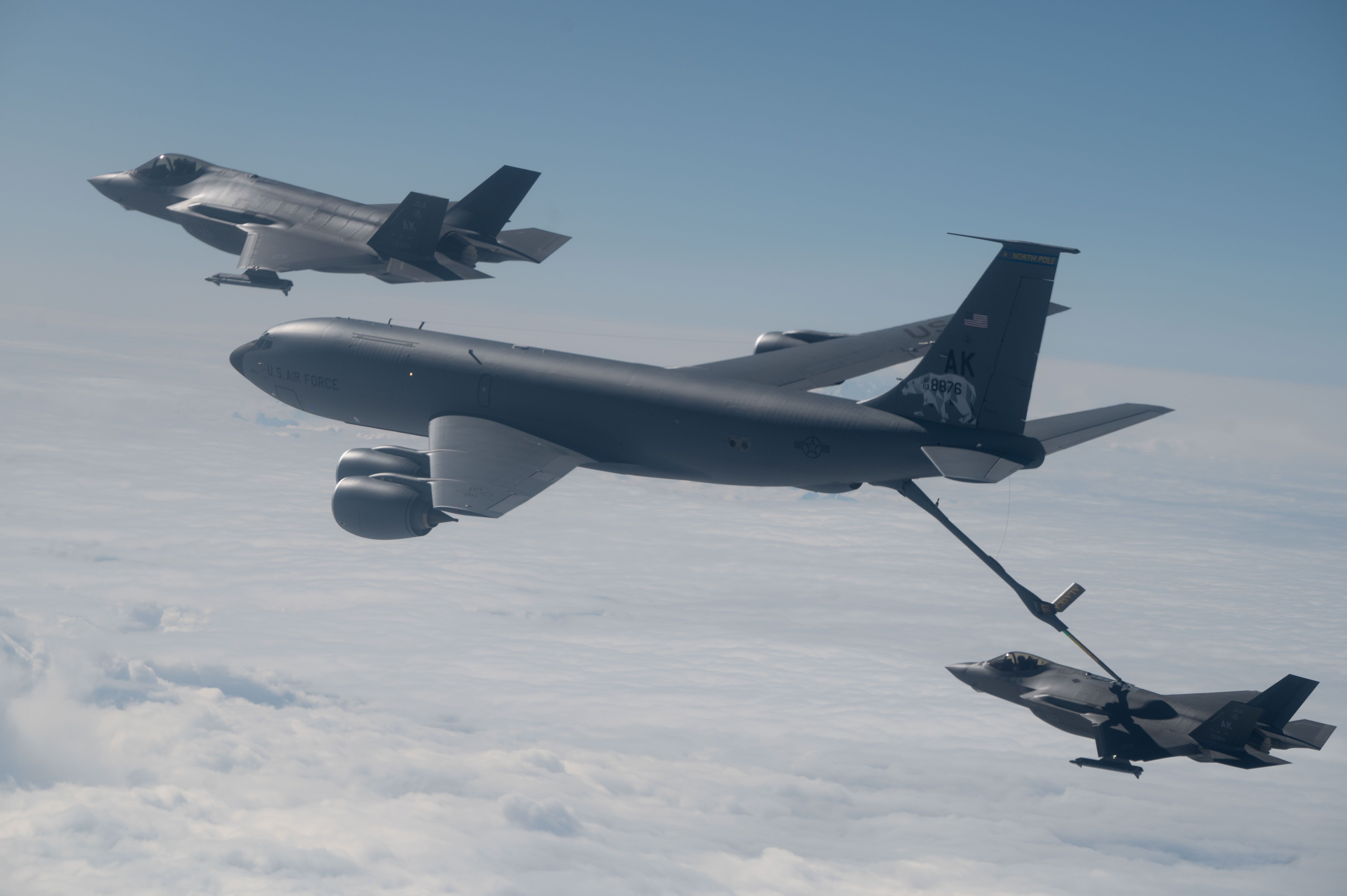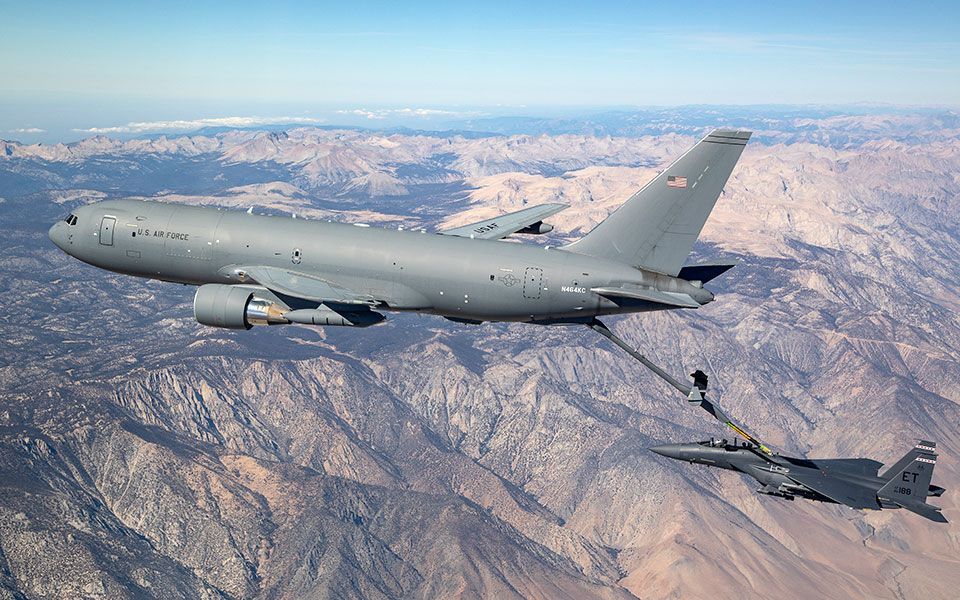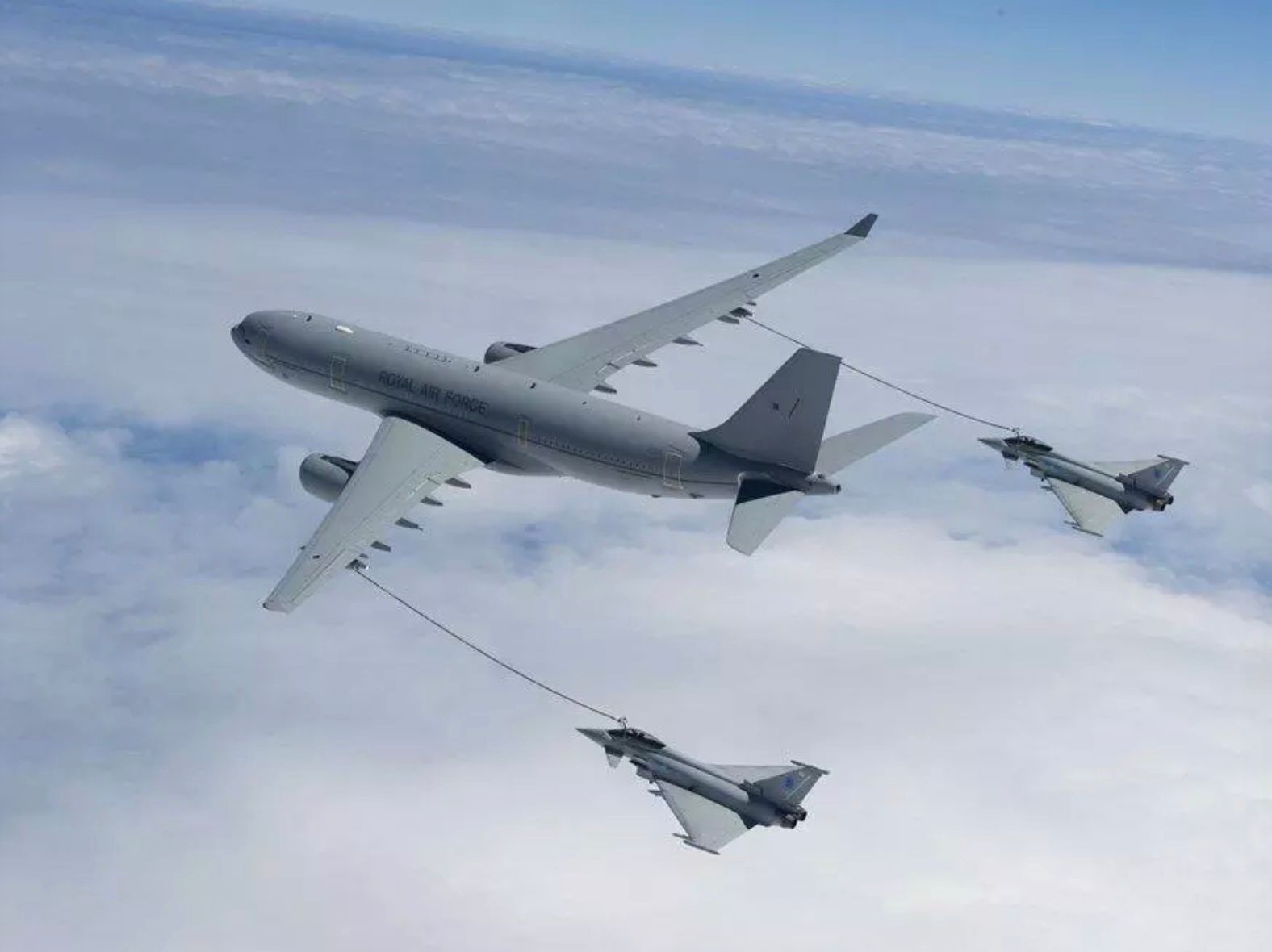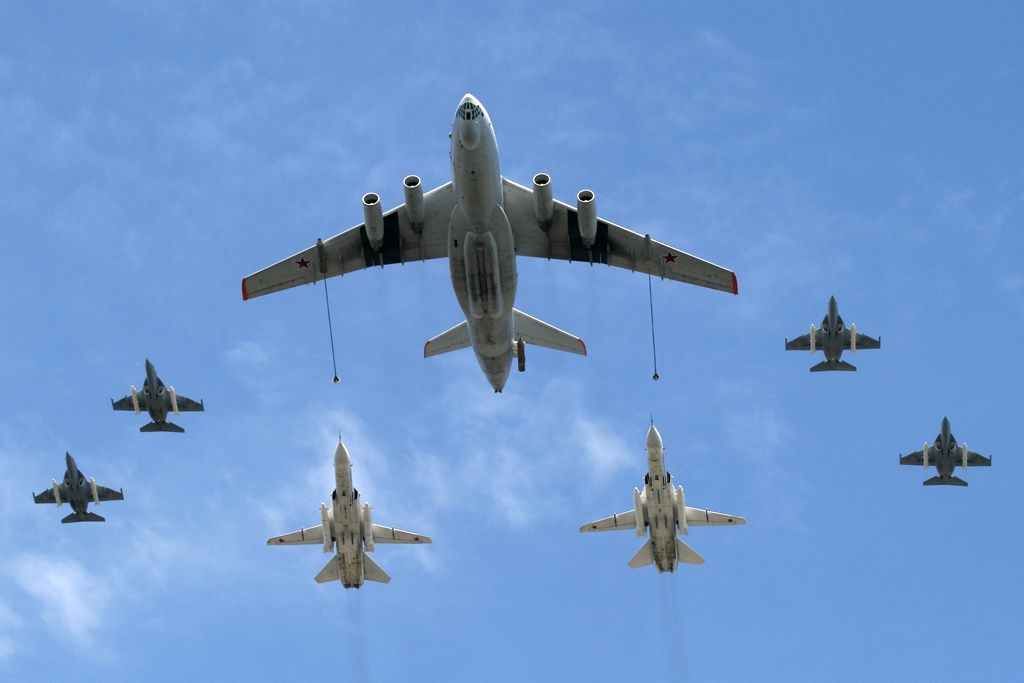Summary
- KC-135 Stratotanker was US Air Force’s first jet-powered refueling tanker entering service in 1957.
- KC-46 Pegasus, based on Boeing 767 jetliner, has independent refueling systems for various aircraft.
- Airbus A330 MRTT, a highly versatile tanker providing critical refueling and transport services.
Aerial refueling tankers are designed to extend the mission range and endurance of strategic combat aircraft. During major conflicts, aerial tankers support the air forces, enabling flexible mission preparation and execution. Simple Flying explores some of the most successful aerial refueling tankers supporting essential missions for decades.
1
KC-135 Stratotanker
First flight: August 1956
- Wingspan: 130 feet, 10 in (39.88 m)
- Length: 136 feet, 3 in (41.53 m)
- Height: 41 feet, 8 in (12.7 m)
- Speed: 530 miles per hour at 30,000 ft (9,144 m)
- Ceiling: 50,000 ft (15,240 m)
- Range: 1,500 miles (2,419 km) with 150,000 pounds (68,039 kg) of transfer fuel; ferry mission, up to 11,015 miles (17,766 km)
- Maximum Takeoff Weight: 322,500 lbs (146,285 kg)
- Maximum Transfer Fuel Load: 200,000 lbs (90,719 kg)
- Maximum Cargo Capability: 83,000 lbs (37,648 kg), 37 passengers
- Power Plant: 4x CFM International CFM-56 turbofan engines
- Thrust per engine: 21,634 lbf
The Boeing KC-135 Stratotanker is the United States Air Force (USAF)’s first jet-powered aerial refueling tanker, replacing the KC-97 Stratofrieghter. Designed and developed in the early 1950s, the type performed its first flight in August 1956 and entered service in June 1957. The aircraft was extensively used in the Vietnam War and other major conflicts that followed. The aerial tanker played a crucial role and continues to do so in extending the mission range and endurance of USAF tactical combat aircraft.
Photo: USAF
According to the Air Force,
“The KC-135 Stratotanker provides the core aerial refueling capability for the United States Air Force and has excelled in this role for more than 60 years. This unique asset enhances the Air Force’s capability to accomplish its primary mission of global reach. It also provides aerial refueling support to Air Force, Navy, Marine Corps and allied nation aircraft. The KC-135 is also capable of transporting litter and ambulatory patients using patient support pallets during aeromedical evacuations.”
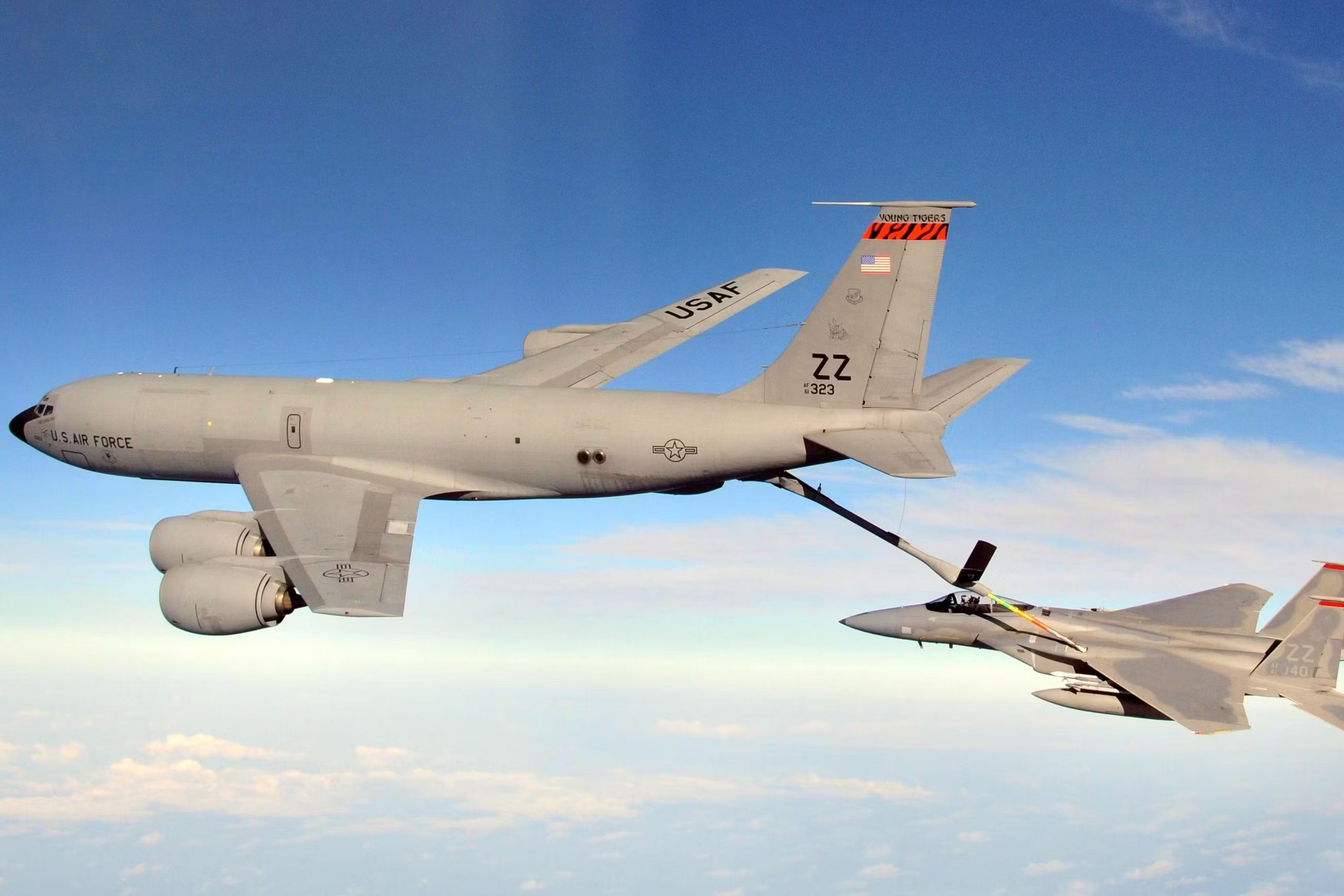
Related
History: The USAF KC-135 Stratotanker Whose 20-Degree Dive Saved A Fighter Jet
One of the two jets had already flamed out.
2
KC-46 Pegasus
First flight: September 2015
- Wingspan: 156 feet, 1 inch (47.5 m)
- Length: 159 feet, 2 inches (48.5 m)
- Height: 51 feet, 9 inches (15.5 m)
- Maximum Takeoff Weight: 415,000 lbs(188,240 kg)
- Fuel Capacity: 212,299 lbs (96,297 kilograms)
- Maximum Cargo Capacity: 65,000 lbs (29,484 kg), 58 passengers
- Pallet Positions: 18 pallet positions
- Air Crew: 15 permanent seats for aircrew, including aeromedical evacuation aircrew
- Power Plant: 2 Pratt & Whitney 4062
- Thrust per engine: 62,000 lbs. – Thrust per High-Bypass engine
Built by Boeing from its iconic 767 jetliner, the KC-46 Pegasus performed its first flight in September 2015 and entered service in April 2019. The highly efficient aircraft can refuel most fixed-wing aircraft with a receiver capability. Equipped with a refueling boom driven by a fly-by-wire control system, the KC-46 A has sufficient fuel offload rates for large aircraft. The Air Force highlights that the specialized hose and drogue system enables independent fuel operation from the refueling boom system.
Photo: Boeing
One of its unique capabilities is its ability to perform multi-point simultaneous aerial refueling. Panoramic displays provide the operator with wing-tip-to-wing-tip situational awareness during operation. The USAF also uses the aircraft for other purposes, including transporting troops, cargo, and aeromedical evacuation. Equipped with several self-protection and defensive mechanisms, the KC-46A is highly survivable in contested environments.
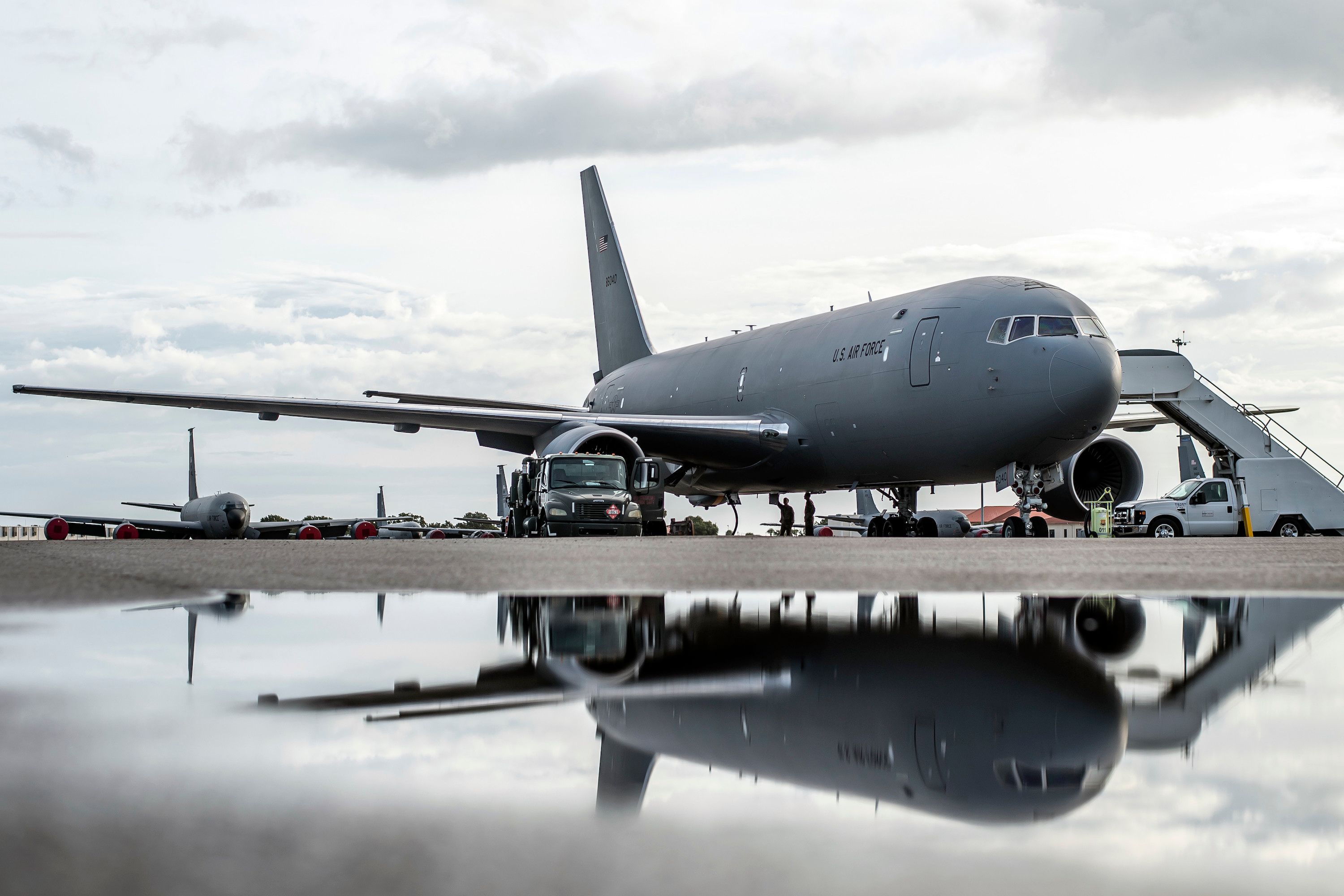
Related
Triple Delivery: 3 Boeing KC-46A Pegasus Go To US Air Force
The US Air Force now has 75 of the modified, militarized Boeing 767 variants with many more on the way.
3
A330 MRTT
First Flight: June 2007
- Length: 58.80 m (193 ft)
- Wingspan: 60.3 m (198 ft)
- Height: 17.4 m (57 ft)
- Max takeoff weight: 233,000 kg (514,000 lb)
- Powerplant: 2× Rolls-Royce Trent 772B, General Electric CF6-80E1A4, or Pratt & Whitney PW 4170; turbofans, 320 kN (72,000 lbf) 320 kN each
- Fuel capacity: 111,000 kg (245,000 lb) max, 65,000 kg (143,000 lb) at 1,000 NM (1852 km) with 2 hours on station
- Maximum speed: 880 km/h (475 knots, 547 mph)
- Cruise speed: 860 km/h (464 knots, 534 mph)
- Ferry range: 14,800 km (8,000 NM) maximum
- Service ceiling: 13,000 m (42,700 ft)
The Airbus A330 Multi Role Tanker Transport (MRTT) is a European aerial refueling tanker and transport aircraft designed on the A330 platform. The highly versatile aircraft performed its first flight in June 2007 and entered service with the Royal Air Force (RAF) in June 2011. The aircraft can not only refuel other aircraft using a refueling boom, pods, or specialized units but can also be refueled by other aircraft using the Universal Aerial Refuelling Receptacle Slipway Installation (UARRSI).
Photo: Airbus
According to Airbus,
“The A330 MRTT can carry up to 111 tonnes of fuel; this is the highest capacity of all tanker aircraft, even those with additional fuel tanks in the cargo deck. It has the capacity of offloading 50,000 kg of fuel to a broad range of receivers during a four-hour loitering mission at over 1,000 nm from its take-off point.”

Related
A Look At The Airbus A330 MRTT: The Military Version Of The A330-200
The aircraft has three main functionalities.
More than 16 countries have ordered the A330 MRTT, most of which are already using it. Of the 78 current orders, Airbus has delivered 59 aircraft as of January, all remaining in operation worldwide.
4
Il-78 Midas
First Flight: June 1983
- Length: 46.59 m (152 ft 10 in)
- Wingspan: 50.5 m (165 ft 8 in)
- Height: 14.76 m (48 ft 5 in)
- Max takeoff weight: 210,000 kg (462,971 lb)
- Fuel transfer rate: 900 to 2,200 liters/min
- Powerplant: 4 × Aviadvigatel D-30 KP turbofan engines, 118 kN (27,000 lbf) thrust each
- Maximum speed: 850 km/h (530 mph, 460 kn)
- Range: 7,300 km (4,500 mi, 3,900 NM)
- Service ceiling: 12,000 m (39,000 ft)
The Illyushin II-78 is a Soviet Union-era aerial refueling tanker based on the II-76 strategic airlifter. The four-engined aircraft was designed by the Ilyushin Design Bureau in the Soviet Union and performed its first flight in June 1986. The aircraft was designed to increase the mission performance of the Soviet’s pre-existing bombers, including the Tupolev Tu-16 and Myasishchev M-4.
The original II-76 tanker design was insufficient with transferring capabilities of less than 10 tonnes of fuel. Hence, a high-capacity version, the II-78, was designed. The first II-78 entered service in June 1987. Apart from the Russian Aerospace Forces, a handful of global air forces, including the Algerian Air Force, Chinese Air Force, Indian Air Force, and Pakistan Air Force, currently operate the II-78 tanker.
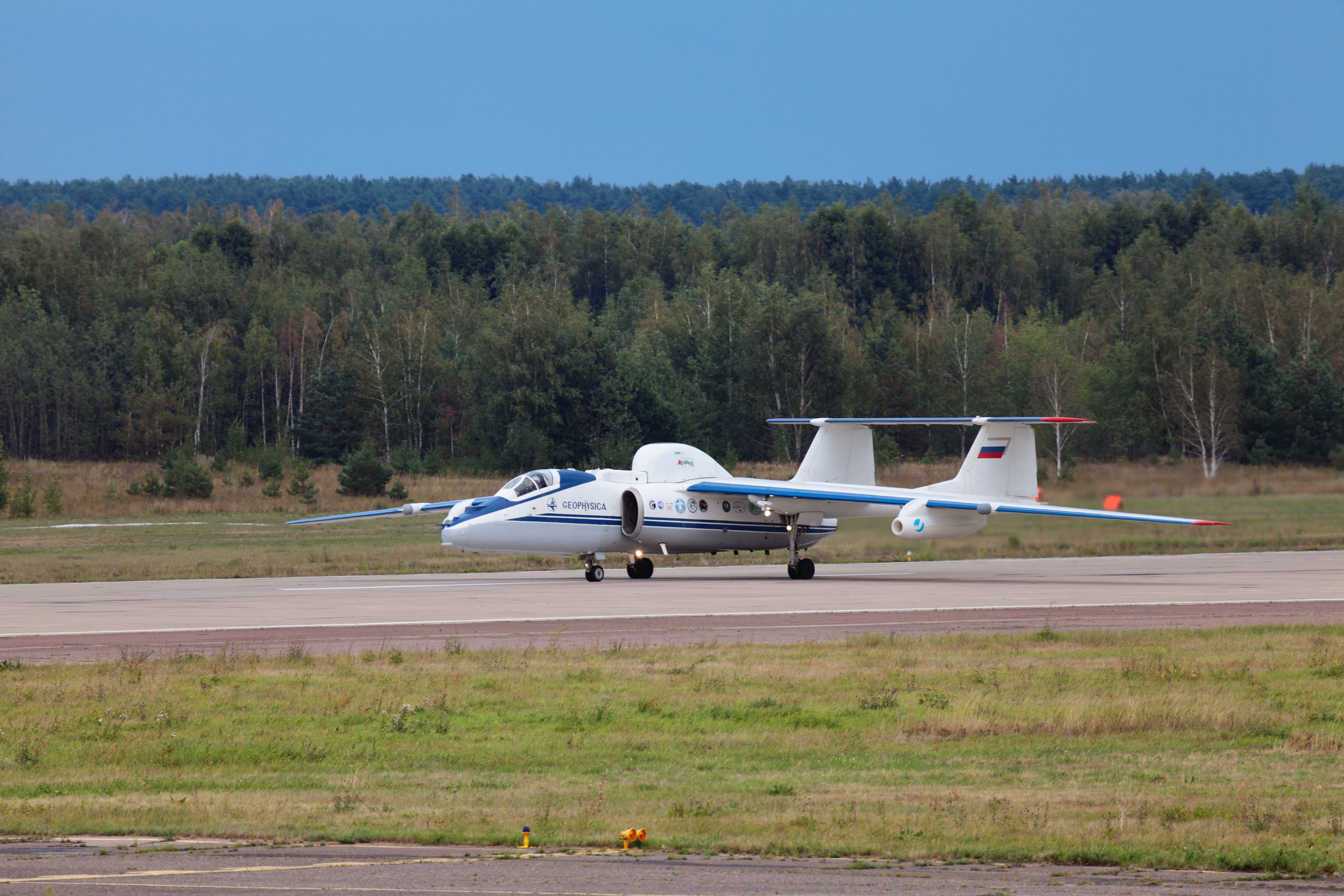
Related
Russia Reportedly Considering Bringing Soviet-Era M-55 Mystic Back Into Service
The high-altitude spy plane would conduct reconnaissance over Ukraine.
5
KC-10 Extender
First Flight: July 1980
- Length: 181 ft, 7 in (54.4 m)
- Height: 58 ft, 1 in(17.4 m)
- Wingspan: 165 ft, 4.5 in (50 m)
- Speed: 619 mph (Mach 0.825)
- Ceiling: 42,000 ft (12,727 m)
- Maximum Takeoff Weight: 590,000 lbs (265,500 kg)
- Range: 4,400 miles (3,800 nautical miles) with cargo; 11,500 miles (10,000 nautical miles) without cargo
- Maximum Cargo Payload: 170,000 pounds (76,560 kg)
- Pallet Positions: 27
- Maximum Fuel Load: 356,000 pounds (160,200 kg)
The McDonnell Douglas KC-10 Extender is an aerial tanker and cargo aircraft primarily operated by the USAF. Based on the three-engine DC-10 airliner, the aircraft is equipped with military-specific instruments and capabilities. A total of 60 KC-10s were built for the USAF between 1979 and 1987. The aircraft can simultaneously perform multiple mission roles.
Photo: United States Air Force
According to the Air Force,
“The KC-10 Extender is an Air Mobility Command advanced tanker and cargo aircraft designed to provide increased global mobility for U.S. armed forces. Although the KC-l0’s primary mission is aerial refueling, it can combine the tasks of a tanker and cargo aircraft by refueling fighters and simultaneously carry the fighter support personnel and equipment on overseas deployments. The KC-10 is also capable of transporting litter and ambulatory patients using patient support pallets during aeromedical evacuations.”
What are your thoughts on some of the best aerial refueling tankers? Share your views in the comments section.
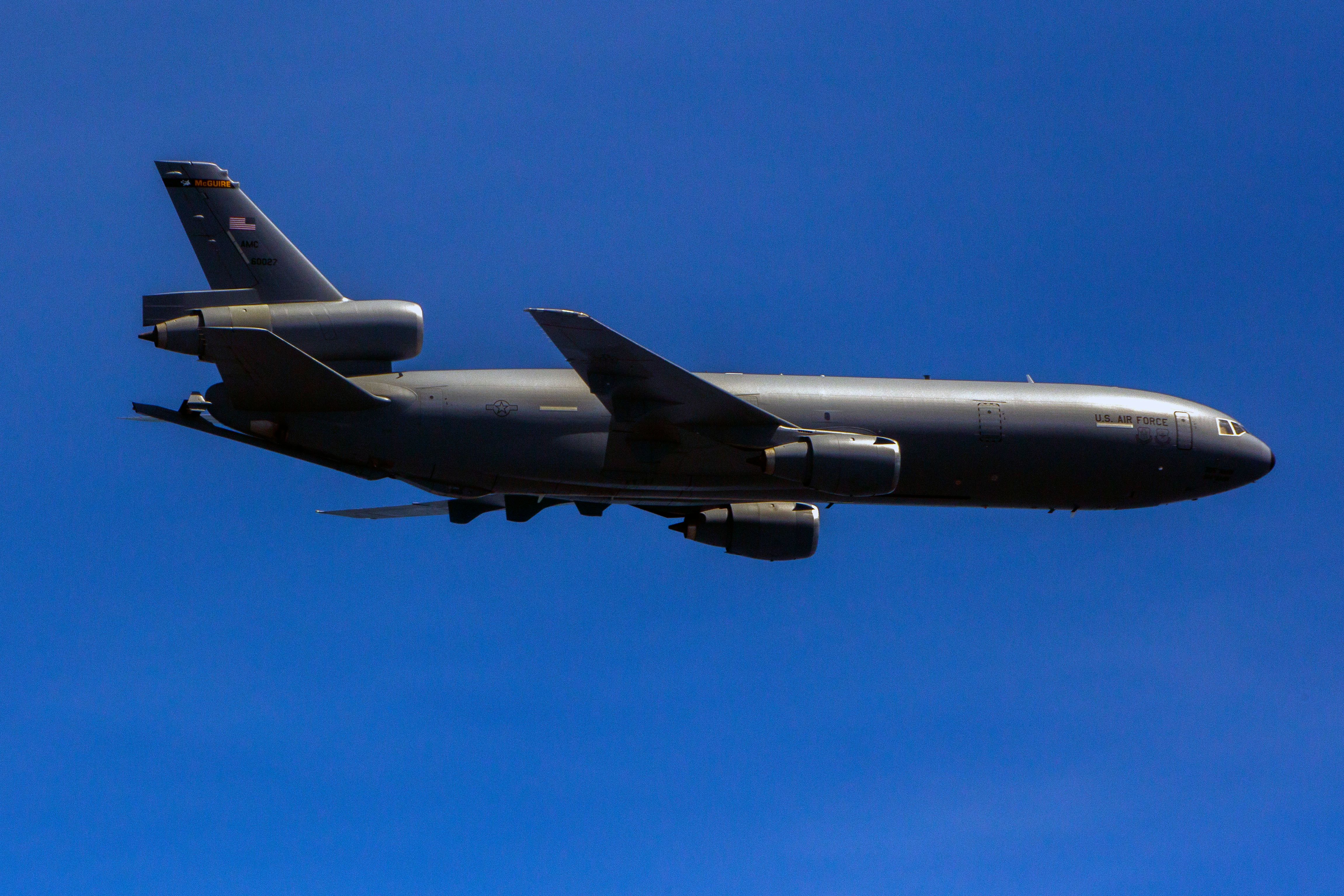
Related
42 Years Of Flight: The McDonnell Douglas KC-10 Extender’s History
A look at one of the United States Air Force’s key assets.

